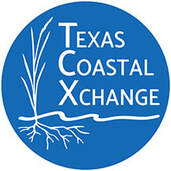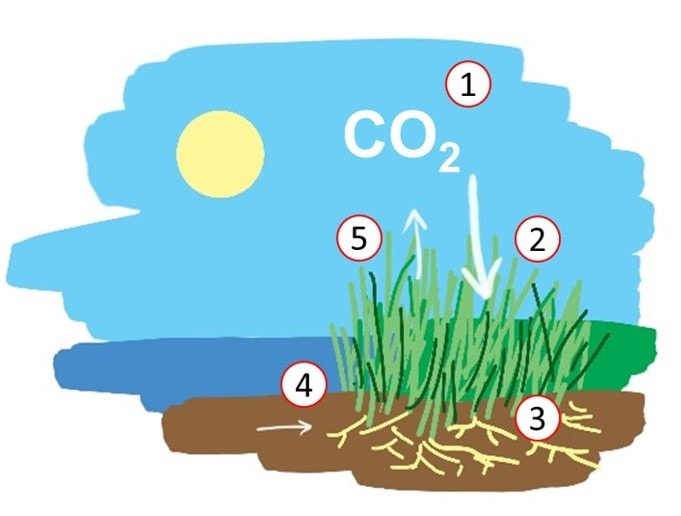Why It Works
Carbon dioxide (CO2) is released from the burning of fossil fuels, like gasoline, oil, and coal. The current level of CO2 in the atmosphere is 415 parts per million, which is the highest level in human history. These high CO2 levels are causing global warming, changing weather patterns, and rising sea levels.
One way that CO2 is removed from the atmosphere is through uptake by plants, which store carbon in their roots and wood, as well as in the soil. The Texas coast is home to several ecosystems that are regulating our environment through carbon storage. Just like Carbon Capture and Storage (CCS) technology removes CO2 from the atmosphere, so do the plants in coastal marshes, coastal prairies, and bottomland hardwood forests. They just do it naturally and in a less expensive way.
These ecosystems also provide other ecological benefits. Carbon storage in the soil increases organic matter content, which leads to increased water holding capacity and slower release of groundwater reserves. This protects us during both floods and droughts, leading to greater water security. Higher soil organic content also leads to higher productivity and nutrient availability, stimulating plant growth and increasing further CO2 uptake. This positive feedback loop is part of what makes the model of the Texas Coastal Exchange so powerful. Our hope is that by supporting carbon storage that is already occurring we are encouraging further protection and restoration of our coastal ecosystems.
One way that CO2 is removed from the atmosphere is through uptake by plants, which store carbon in their roots and wood, as well as in the soil. The Texas coast is home to several ecosystems that are regulating our environment through carbon storage. Just like Carbon Capture and Storage (CCS) technology removes CO2 from the atmosphere, so do the plants in coastal marshes, coastal prairies, and bottomland hardwood forests. They just do it naturally and in a less expensive way.
These ecosystems also provide other ecological benefits. Carbon storage in the soil increases organic matter content, which leads to increased water holding capacity and slower release of groundwater reserves. This protects us during both floods and droughts, leading to greater water security. Higher soil organic content also leads to higher productivity and nutrient availability, stimulating plant growth and increasing further CO2 uptake. This positive feedback loop is part of what makes the model of the Texas Coastal Exchange so powerful. Our hope is that by supporting carbon storage that is already occurring we are encouraging further protection and restoration of our coastal ecosystems.
The Coastal Carbon Cycle
|
|
Blue Carbon
Blue carbon is a term that describes the carbon that is stored in ocean and coastal ecosystems, primarily in the soil and sediments. At TCX, we are focused mainly on the coastal ecosystems that make up 2% of the total area of the oceans and coasts, but account for 50% of the total carbon stored in these soils and sediments.
The coastal ecosystems which store the largest amount of carbon over a given area are intertidal salt marshes, mangrove forests, and seagrass meadows. Because of the unique soil vegetation and chemistry found in these ecosystems, CO2 from the atmosphere is converted to roots, leaves, and stems by photosynthesis and builds up in the soil over time. The rates of carbon storage in blue carbon ecosystems are often equal or higher than productive terrestrial ecosystems like tropical rainforests.
We are losing coastal wetlands all over the world. At TCX, we want to create a system where we can provide grant support to give Texas landowners an incentive to not only protect and manage coastal wetlands, but also to restore wetlands to allow for greater carbon storage capacity.
For more information check out the Blue Carbon Initiative and NOAA's webpage about Blue Carbon.
The coastal ecosystems which store the largest amount of carbon over a given area are intertidal salt marshes, mangrove forests, and seagrass meadows. Because of the unique soil vegetation and chemistry found in these ecosystems, CO2 from the atmosphere is converted to roots, leaves, and stems by photosynthesis and builds up in the soil over time. The rates of carbon storage in blue carbon ecosystems are often equal or higher than productive terrestrial ecosystems like tropical rainforests.
We are losing coastal wetlands all over the world. At TCX, we want to create a system where we can provide grant support to give Texas landowners an incentive to not only protect and manage coastal wetlands, but also to restore wetlands to allow for greater carbon storage capacity.
For more information check out the Blue Carbon Initiative and NOAA's webpage about Blue Carbon.

